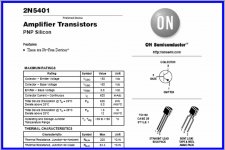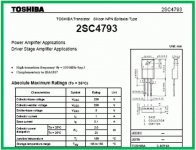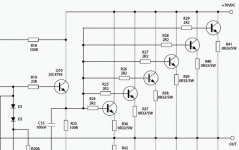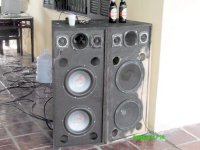Made for Brazilian powerholic.... it is the "marriage" of the Dx Standard, Dx HRII and Dx Precision 1 amplifiers.
The idea was to use the good points of those amplifier, to use the same supply (two 27 AC transformer coils installed in series) to allow you to have simetrical 70 plus 70 volts DC.
Effort was applied not only in sonics, but in special to obtain power into 2 ohms and 1.5 ohms loads.... and i could reach 650 watts RMS, continuous, sinusoidal, undistorted (unclipped) into 1 Kilohertz and flat from 5 hertz to 100 Kilohertz... sensitivity of 750 milivolts to full power.
Into 8 ohms power is not special....only 260 watts RMS.
Supply needs 20000uf each rail, and to each amplifier if you gonna use it into 4 ohms speakers (8 amperes) ... twice of that will be needed if you decide to use lower impedance speakers.
Off set is lower than 1 milivolt and bias is around 100 miliamps (force output to conduct)... zener is 1 watt for safety reasons.
500 miliwatts of more to the bootstrapp resistances
3 watts or more to the output emitter resistances
I have assembled this one last year, into December... and i found it great....have not show to you (the early basic schematic, the one i have made modifications today)... i was silent about this one because of Precision 1..... it was under development last year(board).
Diodes must go to the heatsink...they must be insulated using thermal tubes and attached into the heatsink using glue and thermal compound into the places the diode touches the heatsink...glue goes to the resistance series extreme points.
Avoid too much long wires to this one.... despite it is not too much sensitive into those points (not a tripple darlington) it can result a problem if you use long wires...make it shortest as possible.
There's nothing absolutelly different, just a retuning and a marriage fo those amplifiers i have told you..... adjusted to produce power into lower impedance loads...just that.... reliable, good in sonics (alike HRII).... powerfull as the Precision 1 (more powerfull into low impedance loads)
To use into 4 ohms... i suggest you to use 6 pairs of transistors... will be more safe than the 4 pairs you see into the schematic...was problem of space into the simulator to draw the sketch.....of course, to use into 8 ohms only...you can use 3 pairs... and even into 4 ohms...but better to increase if you gonna plug it into crazy loads.
Well, i do not know if there are someone interested..... if you need something, just post here and i will supply you the needed informations you may need.... transistors are 2SC4793 and 2SA1837...into the output use 2SC5200 and 2SA1943 or other unit with the same, or better, specifications of voltage,current, power dissipation and gain.
Enjoy another Dx amplifier...they are all very nice.... this one has controled thunder bass...huge power...excelent dinamics and special treble too... voice is normal.... about sound stage i have not idea about..have not tested this one in stereo.
regards,
Carlos
The idea was to use the good points of those amplifier, to use the same supply (two 27 AC transformer coils installed in series) to allow you to have simetrical 70 plus 70 volts DC.
Effort was applied not only in sonics, but in special to obtain power into 2 ohms and 1.5 ohms loads.... and i could reach 650 watts RMS, continuous, sinusoidal, undistorted (unclipped) into 1 Kilohertz and flat from 5 hertz to 100 Kilohertz... sensitivity of 750 milivolts to full power.
Into 8 ohms power is not special....only 260 watts RMS.
Supply needs 20000uf each rail, and to each amplifier if you gonna use it into 4 ohms speakers (8 amperes) ... twice of that will be needed if you decide to use lower impedance speakers.
Off set is lower than 1 milivolt and bias is around 100 miliamps (force output to conduct)... zener is 1 watt for safety reasons.
500 miliwatts of more to the bootstrapp resistances
3 watts or more to the output emitter resistances
I have assembled this one last year, into December... and i found it great....have not show to you (the early basic schematic, the one i have made modifications today)... i was silent about this one because of Precision 1..... it was under development last year(board).
Diodes must go to the heatsink...they must be insulated using thermal tubes and attached into the heatsink using glue and thermal compound into the places the diode touches the heatsink...glue goes to the resistance series extreme points.
Avoid too much long wires to this one.... despite it is not too much sensitive into those points (not a tripple darlington) it can result a problem if you use long wires...make it shortest as possible.
There's nothing absolutelly different, just a retuning and a marriage fo those amplifiers i have told you..... adjusted to produce power into lower impedance loads...just that.... reliable, good in sonics (alike HRII).... powerfull as the Precision 1 (more powerfull into low impedance loads)
To use into 4 ohms... i suggest you to use 6 pairs of transistors... will be more safe than the 4 pairs you see into the schematic...was problem of space into the simulator to draw the sketch.....of course, to use into 8 ohms only...you can use 3 pairs... and even into 4 ohms...but better to increase if you gonna plug it into crazy loads.
Well, i do not know if there are someone interested..... if you need something, just post here and i will supply you the needed informations you may need.... transistors are 2SC4793 and 2SA1837...into the output use 2SC5200 and 2SA1943 or other unit with the same, or better, specifications of voltage,current, power dissipation and gain.
Enjoy another Dx amplifier...they are all very nice.... this one has controled thunder bass...huge power...excelent dinamics and special treble too... voice is normal.... about sound stage i have not idea about..have not tested this one in stereo.
regards,
Carlos
Attachments
It's so good to see another amp here fired off by your never resting neuronians!
I just picked up the bridge rectifiers for the HRII power supply, and I'll make my electronic debut by building that amp first.
This amp looks intriguing for a speaker I have, but I have a lot a catching up to do.
I just wanted to thank you for being such a generous and giving person. I continue to read the HRII and Precision threads, and have learned what little (extreamly little) I know from those.
So, very best wishes with this new amp Carlos.
Brian
I just picked up the bridge rectifiers for the HRII power supply, and I'll make my electronic debut by building that amp first.
This amp looks intriguing for a speaker I have, but I have a lot a catching up to do.
I just wanted to thank you for being such a generous and giving person. I continue to read the HRII and Precision threads, and have learned what little (extreamly little) I know from those.
So, very best wishes with this new amp Carlos.
Brian
Thank you very much.... your happyness is what moves me
The Dx Amplifier thread.... Dx amplifier, my amplifier, teaches a lot, because we have studied a lot of things since the early begining...there you have descriptions and how to force an amplifier to work.... a simplified design method or Dc biasing into transistor audio amplifier stages....there you may learn something.
I am happy you have appreciated this one...it has something about the others inside....the good points...the good sounding circuits put all together.
Enjoy and be happy, i am sure the amplifier will cooperate with your joy.
Carlos
The Dx Amplifier thread.... Dx amplifier, my amplifier, teaches a lot, because we have studied a lot of things since the early begining...there you have descriptions and how to force an amplifier to work.... a simplified design method or Dc biasing into transistor audio amplifier stages....there you may learn something.
I am happy you have appreciated this one...it has something about the others inside....the good points...the good sounding circuits put all together.
Enjoy and be happy, i am sure the amplifier will cooperate with your joy.
Carlos
I have the same comment about the resistors on the NPN outputs.. surely they should be at the emitters...
Oh, i'm also wondering why the zener-resistor arrangement for the LTP, instead of a transistor-LED or transistor-transistor based current source? Just curious - i've read so often that zeners are noisy and should be avoided at such places
Oh, i'm also wondering why the zener-resistor arrangement for the LTP, instead of a transistor-LED or transistor-transistor based current source? Just curious - i've read so often that zeners are noisy and should be avoided at such places
Also, I'm wondering, is that VAS/47uf bootstrap & 3.3K+3.3K setup strong enough to drive the transistors into 2 ohm loads? On an amp I built similar to yours (75V rails) I used 2.2k+2.2K and 470uf bootstrap for 4 ohm loads (even though 2 ohms tested fine)
And yea, to enable current sharing, you have to use the resistors in the emitters. The gain is based from b-e voltage, not b-c, so you want emitter resistors to even out the b-e voltage and gain of all the transistors. This keeps one transistor from running hotter than the rest.
And yea, to enable current sharing, you have to use the resistors in the emitters. The gain is based from b-e voltage, not b-c, so you want emitter resistors to even out the b-e voltage and gain of all the transistors. This keeps one transistor from running hotter than the rest.
Will fix the emitter resistance mistake..sorry folks
Yes.... zener produces noises.... the capacitor there hold the job to kill those noises.
Space:
"This one eat the Precision into the breakfast... easy!...laughing"
The best one comparing the three amplifiers made.... better than Dx Standard, better than HRII and better than Precision 1.
You can go to it.... will be very happy and i am sure will thank me a lot by this suggestion.
I could not create anything better...so, i have decided, the way i have done in the past, to join the best points of each one of my amplifiers... the wonderfull bootstrapp is there, and something from HRII and from Precision 1....I have tried Precision II VAS too...i have not the Precision II schematic, i have lost my Hard drive.... and it belongs to Nordic.
......................................................................................................
Yep
I have tried bigger current to the VAS dear Workshop.... and found even better (sligthly better) to hold lower impedance loads...but had problems of temperature....i turn myself afraid to have problems into the master VAS, because of heat and the consequences you have into transistors... also, i have tried to avoid to place the VAS into the heatsink, because of capacitance effects...i found that big heatsinks mounted into that transistors may damage the transistor leads.... because of that i have decided to that current (lower than 10 miliamps).... also i feel afraid to use bigger current there as i have decided to take the risk and to avoid the overcurrent control...that small transistor youc an see into the Precision 1.... aaaagh!.... the problematic one!
I have tried CCS into the drivers... have forced 20 miliamps, 30 miliamps, 40 miliamps and 50 miliamps into them, using two CCS, one to each driver, a transistor/zener/resistances arrangement feeding the VAS...but i have found compressing audio and mufflying the high frequencies too..... the CCS was removed and i have increased the current into the VAS...now bigger than the other amplifiers i have made.
Decisions was made listening....and i remember i found the heat..ahahahahah...the emitter resistances wrong place..ahahahaha.
Carlos
.....................................................................................................
To the ones appreciate big condensers into the board...this one, as uses rail resistances, may need big condensers...or at least, will not be any problem to use them but how they will look.
regards,
Carlos
Yes.... zener produces noises.... the capacitor there hold the job to kill those noises.
Space:
"This one eat the Precision into the breakfast... easy!...laughing"
The best one comparing the three amplifiers made.... better than Dx Standard, better than HRII and better than Precision 1.
You can go to it.... will be very happy and i am sure will thank me a lot by this suggestion.
I could not create anything better...so, i have decided, the way i have done in the past, to join the best points of each one of my amplifiers... the wonderfull bootstrapp is there, and something from HRII and from Precision 1....I have tried Precision II VAS too...i have not the Precision II schematic, i have lost my Hard drive.... and it belongs to Nordic.
......................................................................................................
Yep
I have tried bigger current to the VAS dear Workshop.... and found even better (sligthly better) to hold lower impedance loads...but had problems of temperature....i turn myself afraid to have problems into the master VAS, because of heat and the consequences you have into transistors... also, i have tried to avoid to place the VAS into the heatsink, because of capacitance effects...i found that big heatsinks mounted into that transistors may damage the transistor leads.... because of that i have decided to that current (lower than 10 miliamps).... also i feel afraid to use bigger current there as i have decided to take the risk and to avoid the overcurrent control...that small transistor youc an see into the Precision 1.... aaaagh!.... the problematic one!
I have tried CCS into the drivers... have forced 20 miliamps, 30 miliamps, 40 miliamps and 50 miliamps into them, using two CCS, one to each driver, a transistor/zener/resistances arrangement feeding the VAS...but i have found compressing audio and mufflying the high frequencies too..... the CCS was removed and i have increased the current into the VAS...now bigger than the other amplifiers i have made.
Decisions was made listening....and i remember i found the heat..ahahahahah...the emitter resistances wrong place..ahahahaha.
Carlos
.....................................................................................................
To the ones appreciate big condensers into the board...this one, as uses rail resistances, may need big condensers...or at least, will not be any problem to use them but how they will look.
regards,
Carlos
hi DX,
oh my god.......when i saw it, i was thinking it might be great to listen then prec-1....anyway i just saw on the circuit design that you didn't write some transistors part number. can i have complete diagram pls?
also about the heat sink and other info.
thanks for great amp you are contb to all of us. many thanks to you.
i am still listing your prec-1, sound great. can't wait to make this....ha...ha..
best regards
michael
oh my god.......when i saw it, i was thinking it might be great to listen then prec-1....anyway i just saw on the circuit design that you didn't write some transistors part number. can i have complete diagram pls?
also about the heat sink and other info.
thanks for great amp you are contb to all of us. many thanks to you.
i am still listing your prec-1, sound great. can't wait to make this....ha...ha..
best regards
michael
Here is the corrected schematic..sorry folks
Dear Space.... let me know in advance your supply voltage.
Also your speaker impedance.... your music style and if you will really use it into the maximum power for long time.
Then i will give you AC transformer voltage, current, electrolitic condenser values to your load and type of work.
I will be glad to enter you informs into the simulator to give you better informations about bias resistance value to be pre adjusted, voltages and currents to help you to debugg the circuit if needed.
Thank you by the confidence and preference into Dx Corporation Products (just a dream...we do not pay to dream folks!)
I am sure you gonna be satisfied!... 200 % more guarantee of satisfaction compared to my other amplifiers.
- "Give to the heaven spirits the chance to enter your home to listen paradisiac sounds"
Carlos
Dear Space.... let me know in advance your supply voltage.
Also your speaker impedance.... your music style and if you will really use it into the maximum power for long time.
Then i will give you AC transformer voltage, current, electrolitic condenser values to your load and type of work.
I will be glad to enter you informs into the simulator to give you better informations about bias resistance value to be pre adjusted, voltages and currents to help you to debugg the circuit if needed.
Thank you by the confidence and preference into Dx Corporation Products (just a dream...we do not pay to dream folks!)
I am sure you gonna be satisfied!... 200 % more guarantee of satisfaction compared to my other amplifiers.
- "Give to the heaven spirits the chance to enter your home to listen paradisiac sounds"
Carlos
Attachments
Just a disgusting amplifier....hehehe..to the competition
Bring the hammer.... you gonna have rubish.... hold your trash box.... your old amplifier will be trown away.
My amplifiers are turning so good....but so good that one day i will have my teacher, Mr. Hugh Dean, inviting me to a society..unfortunattely i will die for a heart attack because of emotion...the big Master of the Universe...the doctor of amplifiers (sonics) inviting me to business.
I will be a smilling dead man.... sing "never mind, be happy" into the burial cerimony.
My picture, a disgusting pride... receiving the title from the Academy of Sonics.... Brass medal of "force things to work"
regards,
Carlos
Bring the hammer.... you gonna have rubish.... hold your trash box.... your old amplifier will be trown away.
My amplifiers are turning so good....but so good that one day i will have my teacher, Mr. Hugh Dean, inviting me to a society..unfortunattely i will die for a heart attack because of emotion...the big Master of the Universe...the doctor of amplifiers (sonics) inviting me to business.
I will be a smilling dead man.... sing "never mind, be happy" into the burial cerimony.
My picture, a disgusting pride... receiving the title from the Academy of Sonics.... Brass medal of "force things to work"
regards,
Carlos
Attachments
To the input... differential PNP transistors use
2N5401... voltage there will be 70 volts, and you can see this transistor can work into higher voltages.
Under those transistors the CCS, mirror or current sink (do not know exactly the name), those down ones working as coletor loads for the differential amplifier..use 2N5551 (check the number if this is really the complementary.... as in my home i use BC556 and BC546)
To the voltage amplifier, the small one, the NPN can be this last one written above.... the second one, the master, use a low capacitance unit able to hold 150 volts, more than 5 watts, and gain from 50 to 120.... the 2SC4793 will work there,....but there are others even better to this position, the ones have lower capacitance....you may select your own choice...voltage there will be almost rail to rail swing (maximum possible less saturations and losses)... so take care of that.... limit of voltage...also the power there is not bigger than 3 watts to select heatsink.... please, do not put this transistor into the main heatsink...not a good idea..let it into the board with a 1 1/2 square inch aluminium heatsink or another able to dissipate 3 watts continuously.
To the drivers, use those plastic ones...they are excelent, huge, reliable and do not need insulators...black plastic material (plastic because you are able to make it in many shapes, have plasticity)... they are strong to the work there, can hold the current (lower than 20 miliamps into stand by mode) and the power there... also small...but those can go to the main heatsinks if you want them there....or not!
To the output, use the ones you like, as the most used ones are very good...those motorola are famous and a lot of folks love them.... those 2SC5200 and 2SA1943 are very used in my country...very good ones, in special de Fairchild ones.... you can use even the old Motorolas, thos MJ15XXX and others... the 15 thousand series...... The Sankens are excelent, the better ones, the 2SC2922 and 2SA1216 are great....so....your choice.
To the heatsink dimensions, first let me know your voltage, style of music, impedance used and the power you will use.
Put a multimeter into your audio output, together the speaker and adjust to the level you like..... check the AC voltage, the maximum reading, they are RMS and not precise into frequencies above 500 hertz.... they are made to mains voltage frequencies...but i will have an idea of the average power you use...and if you want more or if this is the way you like.
Those things will help me to help you Space.
Carlos
2N5401... voltage there will be 70 volts, and you can see this transistor can work into higher voltages.
Under those transistors the CCS, mirror or current sink (do not know exactly the name), those down ones working as coletor loads for the differential amplifier..use 2N5551 (check the number if this is really the complementary.... as in my home i use BC556 and BC546)
To the voltage amplifier, the small one, the NPN can be this last one written above.... the second one, the master, use a low capacitance unit able to hold 150 volts, more than 5 watts, and gain from 50 to 120.... the 2SC4793 will work there,....but there are others even better to this position, the ones have lower capacitance....you may select your own choice...voltage there will be almost rail to rail swing (maximum possible less saturations and losses)... so take care of that.... limit of voltage...also the power there is not bigger than 3 watts to select heatsink.... please, do not put this transistor into the main heatsink...not a good idea..let it into the board with a 1 1/2 square inch aluminium heatsink or another able to dissipate 3 watts continuously.
To the drivers, use those plastic ones...they are excelent, huge, reliable and do not need insulators...black plastic material (plastic because you are able to make it in many shapes, have plasticity)... they are strong to the work there, can hold the current (lower than 20 miliamps into stand by mode) and the power there... also small...but those can go to the main heatsinks if you want them there....or not!
To the output, use the ones you like, as the most used ones are very good...those motorola are famous and a lot of folks love them.... those 2SC5200 and 2SA1943 are very used in my country...very good ones, in special de Fairchild ones.... you can use even the old Motorolas, thos MJ15XXX and others... the 15 thousand series...... The Sankens are excelent, the better ones, the 2SC2922 and 2SA1216 are great....so....your choice.
To the heatsink dimensions, first let me know your voltage, style of music, impedance used and the power you will use.
Put a multimeter into your audio output, together the speaker and adjust to the level you like..... check the AC voltage, the maximum reading, they are RMS and not precise into frequencies above 500 hertz.... they are made to mains voltage frequencies...but i will have an idea of the average power you use...and if you want more or if this is the way you like.
Those things will help me to help you Space.
Carlos
Attachments
Hi DX,
Good morning. Here is my requirement as you asked for.
Transistors I will be using 2sc2922/2sa1216 or 2sc5200/2sa1943, I will check both which sounds good, I will use that.
my parts bank have some stocks. 2n5401,2n5551, 2SC4793,2SA1837,BD140, BD139.
I think few from this you used in this circuit right, its easy for me to build ? This design much more easier to make then prc-1. As my exp, Prc-1 not so easy to make from design.
As I have two spare transformer is 60vdc, 10amp each. I won’t operate more then 60vdc. I never listen more then 50% to 60% of the total power RMS. I try to use low volume to listen so the sound gets btr.
My speaker, I am not using too low imp sp like 4ohms…my current speaker is 6ohms and also have 8 ohms as you have seen 8 ohms speaker at the forum. If I operate in lowest then 4ohms will be most lowest, so far I don’t have any 4ohms speaker. I don’t like 4ohms….I like 6 or 8. As I have one speaker box with very good quality with heavy woofer 6ohms, now I am using this for prc-1. Very nice bass can be produce form there. This speaker is not good to use in 60 or 80w amp. It is good if above 100w amp.
Anyway you can recommend which will be btr to use. All I need is btr sonic and sound quality with tight bass. I often listen those are slow music with nice rhythm and lots of music instruments, classic and solo music. They require tight bas with nice treble. As I am playing violin and piano so I like more on musical. I don’t listen rap or disco song.
I will send you few songs, indian Gosal and english song. It is the way you can adjust the tone so beautifully. Very, very sweet voice and music, Also violin music.
Pls check your email later on.
Remarks: just tried to send you song, i don't know your email address.
Best regards
michael
Good morning. Here is my requirement as you asked for.
Transistors I will be using 2sc2922/2sa1216 or 2sc5200/2sa1943, I will check both which sounds good, I will use that.
my parts bank have some stocks. 2n5401,2n5551, 2SC4793,2SA1837,BD140, BD139.
I think few from this you used in this circuit right, its easy for me to build ? This design much more easier to make then prc-1. As my exp, Prc-1 not so easy to make from design.
As I have two spare transformer is 60vdc, 10amp each. I won’t operate more then 60vdc. I never listen more then 50% to 60% of the total power RMS. I try to use low volume to listen so the sound gets btr.
My speaker, I am not using too low imp sp like 4ohms…my current speaker is 6ohms and also have 8 ohms as you have seen 8 ohms speaker at the forum. If I operate in lowest then 4ohms will be most lowest, so far I don’t have any 4ohms speaker. I don’t like 4ohms….I like 6 or 8. As I have one speaker box with very good quality with heavy woofer 6ohms, now I am using this for prc-1. Very nice bass can be produce form there. This speaker is not good to use in 60 or 80w amp. It is good if above 100w amp.
Anyway you can recommend which will be btr to use. All I need is btr sonic and sound quality with tight bass. I often listen those are slow music with nice rhythm and lots of music instruments, classic and solo music. They require tight bas with nice treble. As I am playing violin and piano so I like more on musical. I don’t listen rap or disco song.
I will send you few songs, indian Gosal and english song. It is the way you can adjust the tone so beautifully. Very, very sweet voice and music, Also violin music.
Pls check your email later on.
Remarks: just tried to send you song, i don't know your email address.
Best regards
michael
All rigth...will return directly to your mail when ready
I will study something to your own character and use.
60 volts DC..... hummmm...quality.... not a real powerholic, seems you have no sensitive speakers.
may E mail adress is:
panzertoo@yahoo.com
You are welcome here....but i am afraid you enter with strange letters....those i use to delete, as i cannot read...but will observe the message size, or attachment from now on.
regards,
Carlos
I will study something to your own character and use.
60 volts DC..... hummmm...quality.... not a real powerholic, seems you have no sensitive speakers.
may E mail adress is:
panzertoo@yahoo.com
You are welcome here....but i am afraid you enter with strange letters....those i use to delete, as i cannot read...but will observe the message size, or attachment from now on.
regards,
Carlos
The unit was made to long time power delivery
and it is beeing constructed using more transistors into the output...of course.
Those output transistors into the schematic are only suggestion, and will depends on the impedance and type of job the amplifier will face...if heavy duty, over 2 ohms.... 12 pairs or more gonna be used.
Schematic made to 8 ohms and normal music reproduction that uses to be into average power levels... but for instruments, public adress or live shows, using, guitar, bass and other sources of sound... using mixer output..then we gonna need more power transistors.
Brazilians use to go to the beaches during the weekend and holidays, and then, loud music, dance and beer will be with them for whole day.
My friend Mano Brown and his Brownies
regards,
Carlos
and it is beeing constructed using more transistors into the output...of course.
Those output transistors into the schematic are only suggestion, and will depends on the impedance and type of job the amplifier will face...if heavy duty, over 2 ohms.... 12 pairs or more gonna be used.
Schematic made to 8 ohms and normal music reproduction that uses to be into average power levels... but for instruments, public adress or live shows, using, guitar, bass and other sources of sound... using mixer output..then we gonna need more power transistors.
Brazilians use to go to the beaches during the weekend and holidays, and then, loud music, dance and beer will be with them for whole day.
My friend Mano Brown and his Brownies
regards,
Carlos
Attachments
- Status
- This old topic is closed. If you want to reopen this topic, contact a moderator using the "Report Post" button.
- Home
- Amplifiers
- Solid State
- This is the DHR.... Dx High Resolution Turbo





